Ferula spp.
There are certain distinctive flavors that define regional cuisine for me.
I can’t even imagine my favorite Italian dishes without basil. Japanese dishes would lose something special without shiso.
When it comes to South Indian food, asafetida is the flavor that I can’t imagine cooking without.
Asafetida is another name for species in the Ferula genus. It’s also what we call the spice derived from the roots of the plant.
Any of the species within this genus might be called asafetida, but it usually refers to the three or four species that are most commonly used to make the spice.
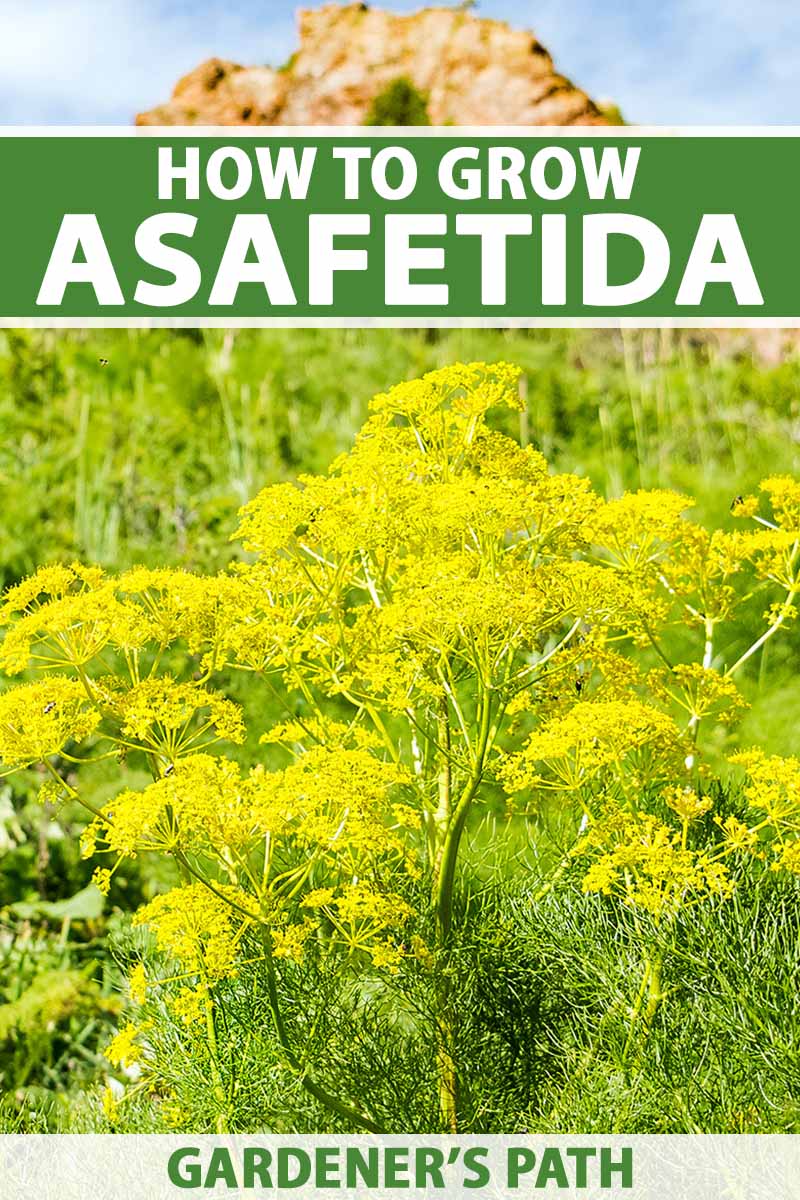
We link to vendors to help you find relevant products. If you buy from one of our links, we may earn a commission.
These plants aren’t common in the home garden. I don’t know if that’s because the plant itself has an unpleasant odor or if it’s because it’s a challenge to grow. Maybe it’s a combination of both.
Whatever the reason, it’s a fun gardening project with a massive payoff if you’re a fan of asafetida in your cooking.
If you’re unfamiliar with the spice, before you cook it, asafetida has a sulfurous, funky scent and flavor.
But once you temper it with a bit of heat, it mellows to an onion-like pungency that has a unique taste impossible to recreate with anything else.
You can grow this pretty, if temperamental, plant at home and even make your own spice from the root. Let’s get to know asafetida. To do that, we’re going to discuss the following:
What You’ll Learn
Whether you’re into growing unusual plants or you just really, really love cooking with hing, this guide can help you make this herb thrive.
Just because it’s fussy doesn’t mean it’s impossible. Have some faith and get those recipes ready.
What Is Asafetida?
Asafetida is the powdered spice made from the dried resin of the roots and rhizomes of several species in the Ferula genus, including F. foetida, F. assa-foetida, F. alliacea, S. sinkiangensis, F. fukanensis, and F. latisecta.
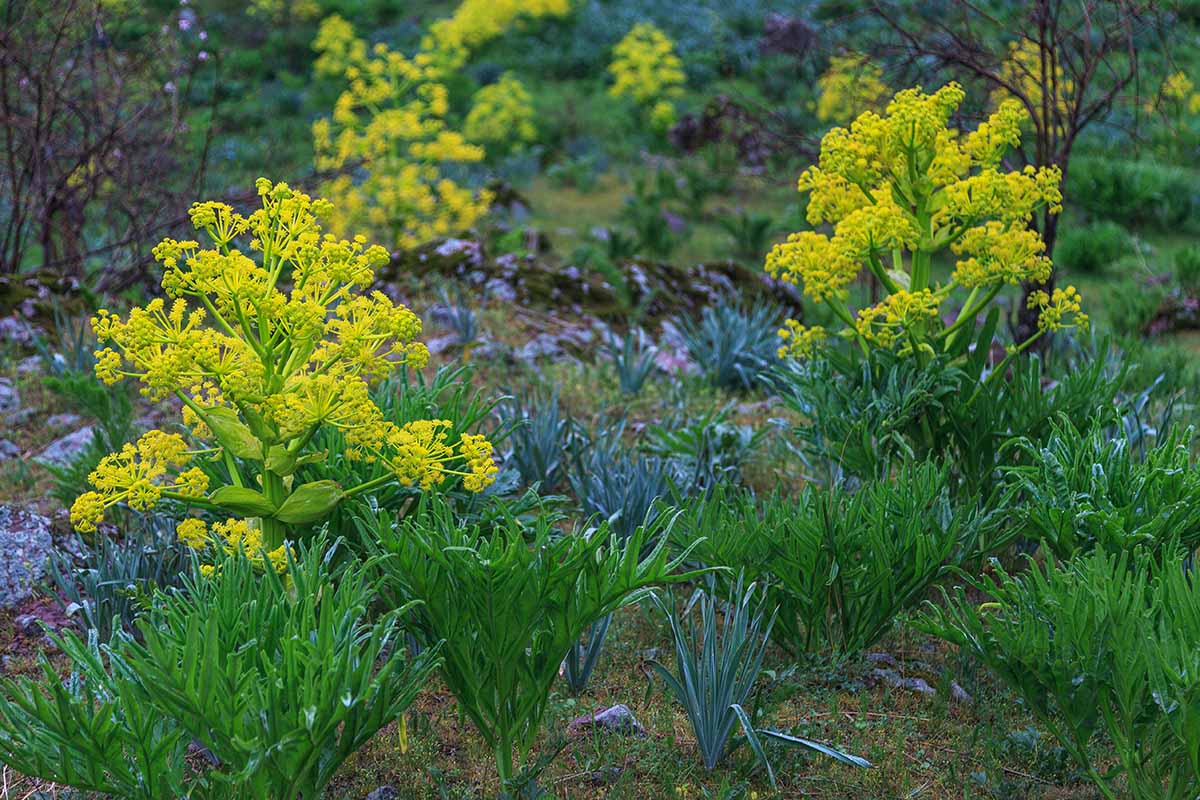
This dried resin is a gum latex that can be ground up into a powder, which is how most people purchase it for use in cooking.
The plants themselves look like giant fennel and can grow up to seven feet tall. Unsurprisingly, asafetida is related to fennel and others in the Umbelliferae family, like carrots, parsley, and dill.

When in bloom, asafetida produces clusters of small yellow and white flowers in the summer that appear at the end of the tall, thick stems, and there can be six or seven stems per plant. It’s a big, bold, dramatic option for the garden.
Self-fertile, asafetida doesn’t need any friends to produce seeds. These plants are also monocarpic, and once mature, bloom only once.
The spice produced from the resin is known as hing in Hindi, and it’s also been referred to as the food of the gods or devil’s dung (merde du diable in French). It may also be spelled asafoetida.
Whether you spell it with or without the “o,” it’s pronounced “a-suh-feh-tee-duh,” with the stress on the third syllable. The name translates from Latin to mean stinking resin in English.
The resin has a sulfurous, bitter, oniony scent and flavor that some people find downright offensive. The first time I got a whiff, I thought I was smelling cabbage and raw onions left in a rotten compost pile in the hot summer sun.
I had bought a container at the Indian market and tossed it into the trunk of my car, and I tell you, when I opened the trunk when I got home, I thought something had died. It’s right there in the name: “fetid.”
But used right, it adds umami and a savory flavor, particularly to vegetarian dishes. I was worried that I’d bought the wrong thing, but I just didn’t know that the delicious food I’d tasted used cooked asafetida, which has a different flavor from the raw stuff.
Once the spice is heated up in some oil, it develops a more mellow, savory flavor reminiscent of onions.
Cooking breaks down the 2-butyl 1-propenyl disulfide and other disulfides in the resin that cause the pungent scent, leaving the oniony diallyl sulfide behind.
For that reason, it can be used as a substitute for onions and garlic by individuals with intolerances or allergies to alliums, and by practitioners of religions that don’t allow consumption of root plants.
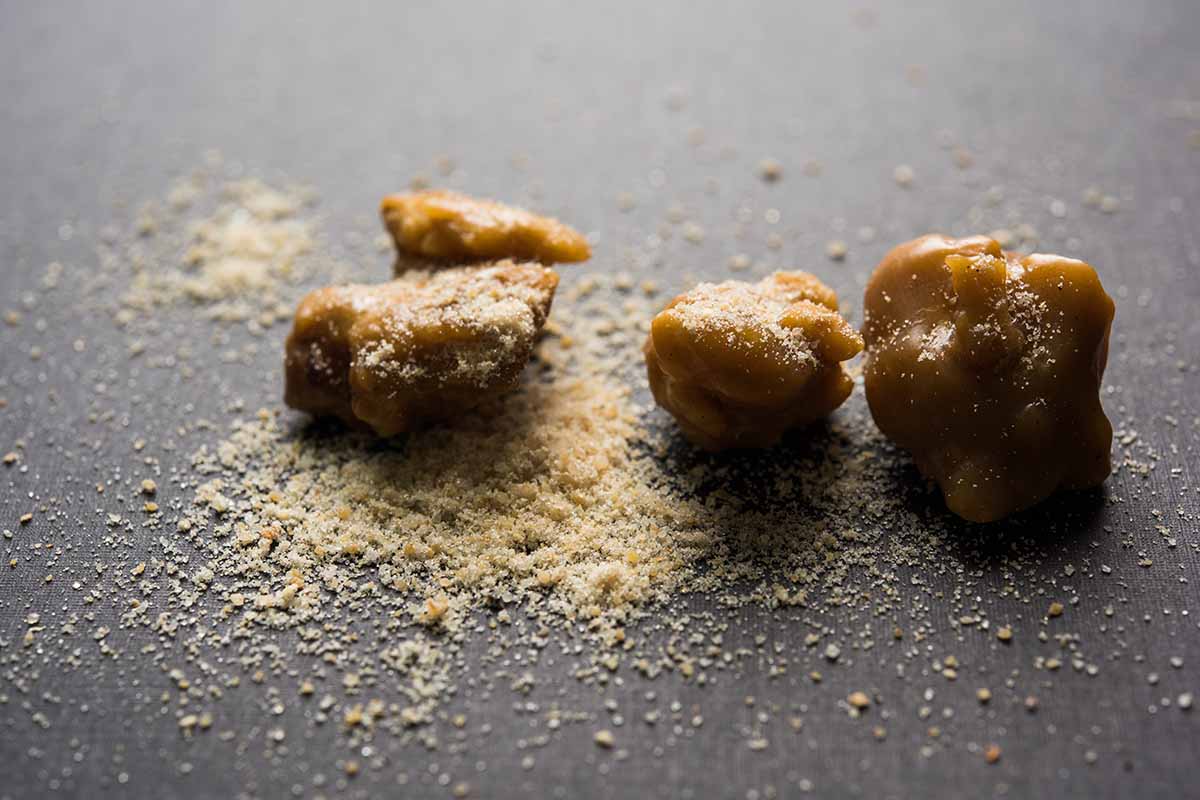
You can also buy hing as a solid lump or granules of dried resin, or as powder mixed with wheat or rice flour. The lumps or granules are heated and then crushed into a powder or small chips are used in cooking.
It’s not just the spice that has a pungent scent. The plant does too, to a lesser degree.
It’s definitely concentrated in the roots, but if you accidentally crush a leaf, you might find yourself heading in the opposite direction.
Cultivation and History
Asafetida is native to and continues to grow wild in modern Afghanistan, Kazakhstan, Uzbekistan, Tajikistan, Turkmenistan, Pakistan, China, Russia, and Iran.
Ferula was brought to Europe as early as 300 B.C. during one of Alexander the Great’s expeditions, but it didn’t catch on as it did in India.
If it was used, it was treated as a medicine. It was first imported to India around 600 B.C., where it was put to good use in both Ayurvedic medicine and as an ingredient in cooking.
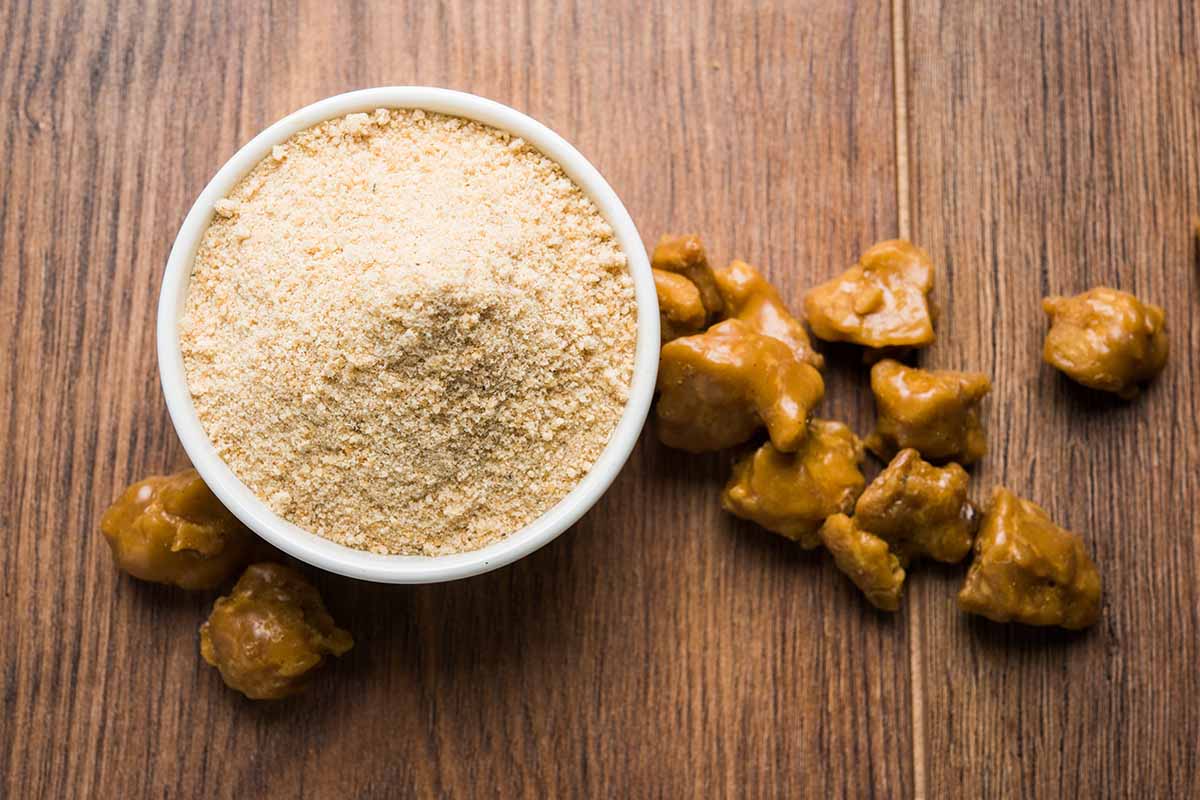
Today, most of the stuff you’ll find at the store is derived from wild plants harvested for the purpose of making the spice. It’s difficult to cultivate asafetida, and there’s lots of it growing wild in its native range.
Nonetheless, cultivation efforts have begun in recent years in India.
You can grow it as an annual in USDA Hardiness Zones 3 to 7 and as a perennial in Zones 7 (with protection) to 11, though this range may vary a bit depending on the species.
If you grow it as an annual, you won’t be able to harvest the resin since the roots won’t have enough time to mature, but you can use the leaves and stems.
Propagation
Asafetida doesn’t transplant well and it responds poorly to division.
It has a long taproot that doesn’t like being disturbed. I’ve never seen a seedling for sale, online or in person. That leaves seeds available to us.
If you decide to start seeds indoors, sow them in four-inch biodegradable containers, like those made by CowPots.
These will biodegrade into the soil when you transplant, so you won’t disturb the young roots by removing the seedling from its pot.
Grab yourself a pack of 12, 180, or 450 pots at Arbico Organics.
They’re handy for more than just starting plants with sensitive taproots. They’re great for most seedlings because they reduce the risk of transplant shock.
If you start seeds indoors, you’ll need to stratify them for eight weeks before you sow them, so plan ahead. Your goal should be to plant outdoors after the last predicted frost date.
To do this, moisten some sand in a resealable container or bag and mix the seeds into the sand.
Seal it and keep the container in the refrigerator for eight weeks. Make sure the sand stays moist throughout this period.
You can propagate the seed without stratifying first, but it improves germination rates. If you’re feeling lazy, just start twice as many seeds as you need and hope for the best.
Sow in seed-starting medium and cover the seeds with a quarter-inch of soil. Water well and place somewhere that receives eight hours of light per day. Or, place them under artificial grow lights.
It’s time to move containers outdoors to harden them off once the last predicted frost date has passed in the spring. Then you can plant the seedlings in the ground.
To harden seedlings off, place the pots in a protected spot with direct sun exposure for an hour or so, then bring the pots back indoors. Add an hour each day for the next week. Now, it’s time to transplant.
Dig a hole twice as wide and deep as the container that the seedling is growing in and gently place the seedling, biodegradable pot and all, in the soil.
Firm up the soil around the pot. You want the soil in the pot to be about the same height as the surrounding soil, so you might have some of the lip of the pot poking up over the soil.
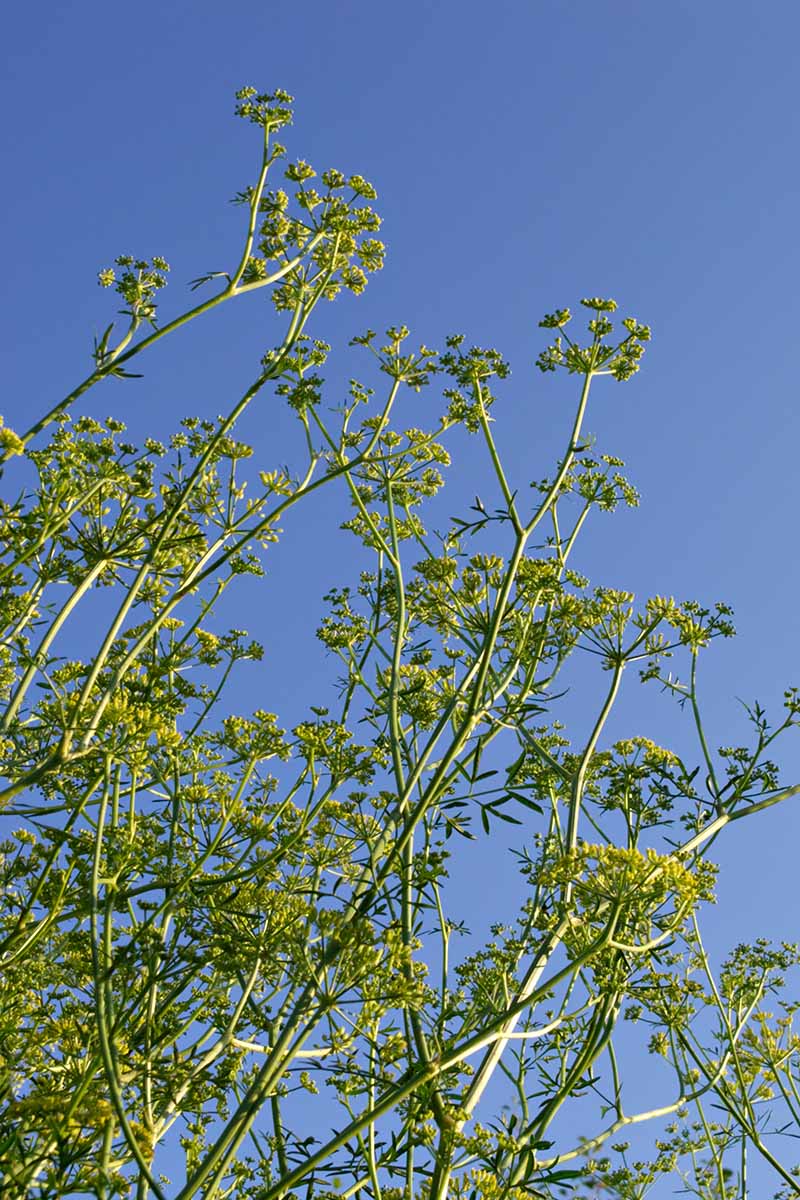
If you opt to direct sow seeds outdoors, you can forego the artificial cold stratification and sow in the fall.
Place seeds about 18 inches apart and a quarter inch deep. Water well but do so gently so you don’t displace the seeds.
You should keep the soil moist until the seeds germinate, which takes several weeks, and continue to maintain soil moisture until the seedlings are about three inches tall.
Then you can cut back on water, and allow the surface to dry out between watering.
How to Grow
Ferula grows best in a cold, arid, sunny climate. While it’s a fussy plant, in the right climate, it will hunker down and stubbornly grow (and spread) without any interference from us.
But when the weather takes a turn that these plants don’t like, they go dormant. That’s why they grow so slowly.
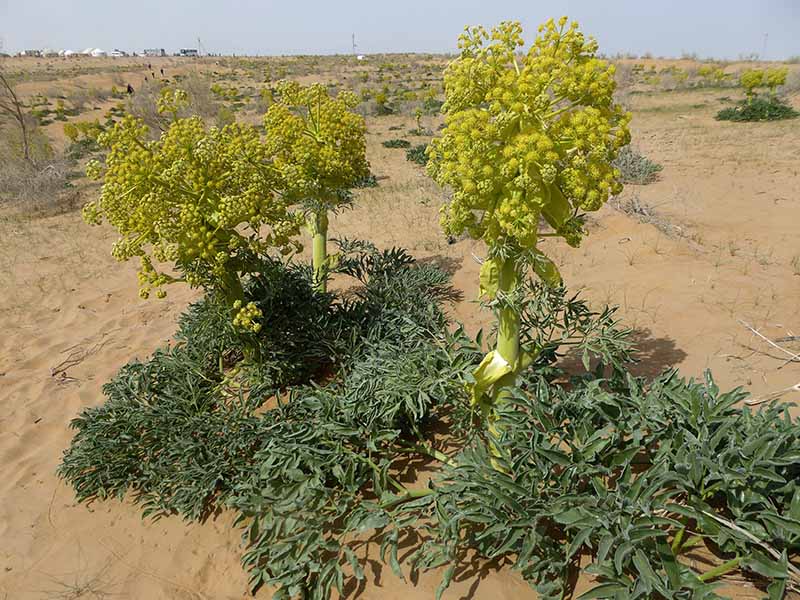
It’s an ongoing cycle of dormancy, resurgence, dormancy, and resurgence. But if you can manage the environment as best you can, you can speed things up.
Asafetida needs full sun, but it doesn’t like heat. Don’t be tempted to grow it in partial shade to keep it cool. It actually needs full sun.
In the wild, you’ll find most species growing in sandy or loamy soil in full sun.
The quickest way to get rid of asafetida is to plant it somewhere with heavy, poorly-draining soil. Your soil should have a pH around 6.5 to 7.5.
Don’t overwater these plants!
Drought-tolerant once established, that long tap root will reach down into the ground to find water, and you’re more likely to hurt it by overwatering rather than underwatering.
If you stick your finger into the soil about three inches deep around a plant that is a foot tall or taller, you should barely feel any moisture at your fingertip before you add more water.
Don’t bother fertilizing. Remember, the spice typically comes from wild specimens, and no one is out there feeding them.
Asafetida prefers cool conditions and it’s time to start taking proactive measures any time the temperature begins to rise above 70°F. On hot days, spray the foliage with water to keep plants cool and cover them temporarily with shade cloth.
Remember, your ferula won’t die, it will just go dormant in adverse conditions. That means it will stop growing, or it might even die back temporarily. The more often the plant goes dormant, the longer it takes to mature.
Similarly, cold temperatures below 35°F will also signal the plant to go dormant. And anything below 15°F can kill these plants.
Wrap your plants in burlap during freezing weather and heap lots of organic mulch on the ground around them in the winter to provide insulation to the roots.
All this is to say that people gardening in places like the Pacific Northwest, Ireland, and the United Kingdom will be able to grow asafetida without many issues. Outside of those places, it’s going to take a little extra work.
Growing Tips
- Plant in full sun.
- Water only when the top three inches of soil dries out.
- Protect plants from heat and cold.
Maintenance
Asafetida is particularly awesome because you don’t have to do any maintenance.

If a leaf is broken or looks diseased, go ahead and cut it off. Same with any broken stems.
If the plant gets a little top-heavy and starts tipping over, you can brace it with some stakes for support.
Otherwise, that’s about it!
If you’re in Zone 7, you will want to heap two inches of natural mulch like leaves or shredded hardwood over the soil. Cover the plant with frost cloth if you have a surprise late spring frost.
Species to Select
Most species look so similar that chemical analysis is the only way to tell one from another with certainty. But some stand out because of their size or their native range.
Alliacea
Native to Iran, this plant has similar characteristics to F. foetida and can be grown and used just like the more common species. It’s often confused with F. foetida in the wild.
Assa-foetida
This species is common in Iran but less common outside of the country.
It’s native to southern Iran, though not all Ferula plants growing in the region are necessarily F. assa-foetida. It has naturalized in Turkmenistan, Uzbekistan, Libya, India, Nepal, and Laos.
Communis
This species is also known as giant fennel because it grows up to nine feet tall. It’s more cold tolerant than other species, as well.
Foetida
Chances are, if you’ve used asafetida to ramp up your cooking, it was this species.
It’s native to Turkmenistan, Iran, Afghanistan, Pakistan, Uzbekistan, Tajikistan, and Kazakhstan and is a bit smaller than some other species. It only grows to about three feet tall.
Gummosa
Native to Turkey, Russia, and Iran, this species, commonly known as galbanum, grows to about three feet tall.
It’s also much more cold-hardy than most species and it can grow as far north as Zone 5 in the US.
The compromise for cold-region growers is that the root of this species is much milder. But actually, maybe that’s a good thing.
You won’t have to warn the neighbors every time you open up the jar in your spice cabinet! The resin has a flavor like celery and onion when it’s cooked.
Moschata
Another huge species (syn. F. sumbul) that grows up to nine feet tall, “musk root” isn’t cold-tolerant at all. Don’t even bother growing it north of Zone 8!
It’s native to Kazakhstan, China, and Tibet, and is primarily used for medicinal and perfumery purposes though you can also use it to flavor food.
Sinkiangensis
This species is endemic to China, and the resin from the roots is usually sold as a medicinal product. Sadly, its native range is rapidly diminishing.
Managing Pests and Disease
One of the benefits of growing an uncommon species outside of its native range, and one that has an extremely unpleasant scent, is that pests avoid it.
The species of pests and pathogens that have evolved to feed on Ferula don’t, for the most part, live in North or South America.
The common pests that do live on those continents don’t seem to have much taste for the plant, much like humans who aren’t familiar with how to make this plant shine.
In fact, if you want to deter herbivores like voles, rabbits, and deer, plant ferula around your garden.
These animals will steer well clear of the plants. Seriously! A tight line of plants will work just as well as a fence to keep critters away.
Your biggest challenges are going to be refraining from overwatering and protecting this plant from high heat or extreme cold.
Overwatering is a quick route to root rot, which can be a real problem since it’s the root we’re after.
Harvesting
Harvest the leaves as needed using scissors, but don’t remove more than a quarter of the plant at a time. The shoots can also be harvested when they’re young. Just slice them off at the ground level.

The root should only be harvested after the plant is about four years old but before it has flowered.
These plants take up to seven years to mature, but once they do flower, they die shortly afterwards. You want to find that sweet spot between too young and flowering.
Preserving
If you want to give making the powdered spice a go, harvest the roots of a plant that hasn’t flowered.
Clean the roots and make numerous cuts all around the root. Place the root on a baking sheet and put it in a cool, dry, protected area.
The milky resin will ooze out of the root over the next few weeks, turning reddish-brown as it hardens.
After about six weeks, scrape off the resin. Once you extract the resin, the roots are pretty tasteless and tough. Toss them in the compost.
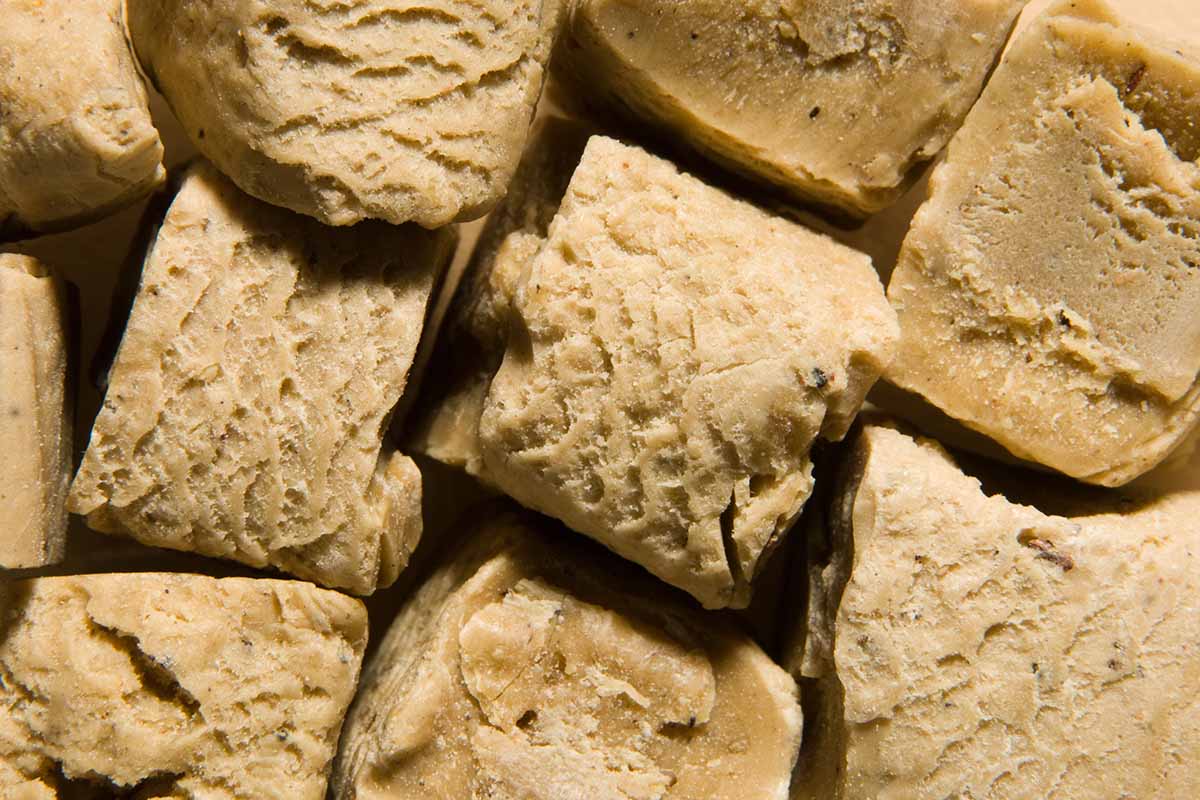
You can store the chunks, but be careful how you do it.
These smell extremely pungent and they will taint any other nearby spices. Store them in a sealed container placed inside a second sealed container.
You can also grind the chunks into powder.
Keep in mind that the resulting powder will be stronger than most of the stuff you can buy in stores, since the store bought spice is usually mixed with flour or other agents to preserve it or keep it from clumping.
To keep the spice fresh, only grind as much as you need each time you use it.
Store the powder in a sealed jar, or better yet, a sealed jar placed inside a sealed bag.
After you use the spice, close and wipe the outside of the container and put it in the bag, or you risk allowing the scent to permeate the rest of the cabinet.
Recipes and Cooking Ideas
If you cook with the powder, you probably already know that it’s pungent. This isn’t a spice that you want to sprinkle liberally like salt over your finished dish.
For those unfamiliar with the spice, you should mix it in with some heated fat or other cooking liquid and let it dissolve into it. Then add the rest of your ingredients.
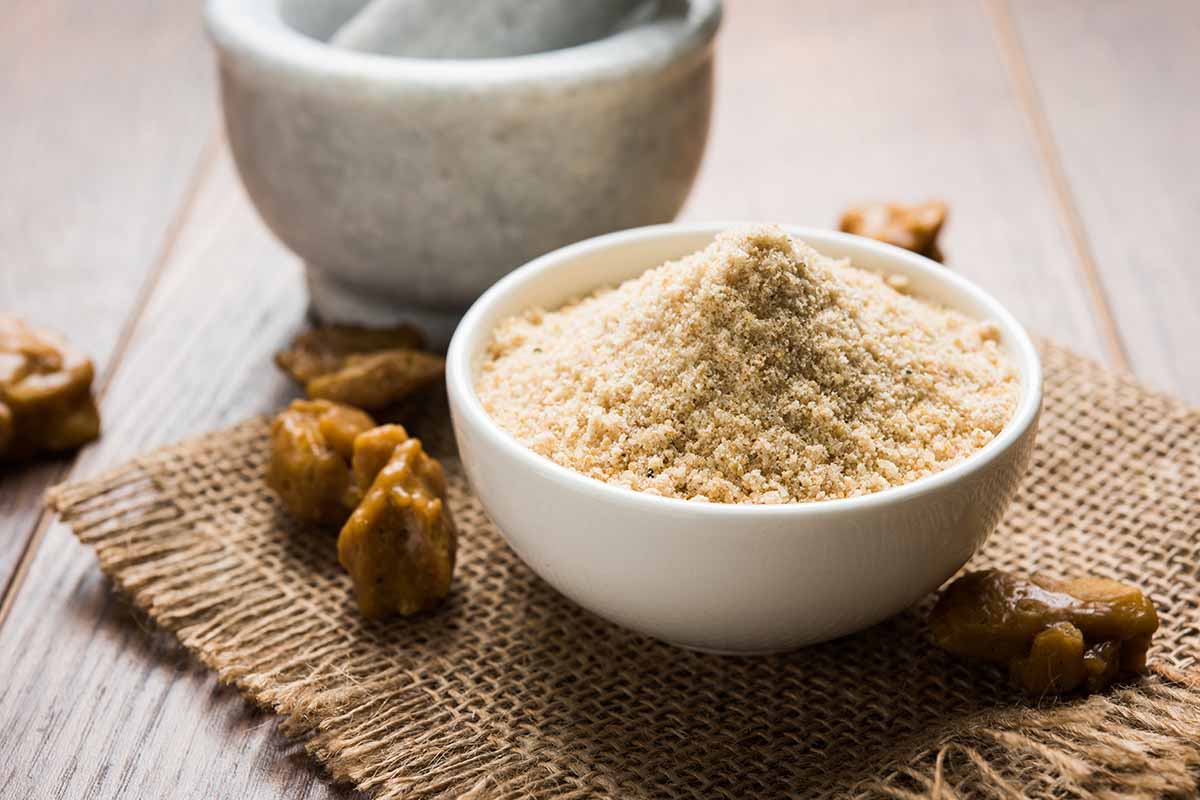
This method of tempering spices in hot ghee or oil is known as tarka.
If you want something easy to start with, try mixing a pinch of the spice with three tablespoons of butter that you’ve melted and heat it up over the stove.
Let the butter and asafetida cook for a few minutes so it’s fully dissolved and incorporated, but don’t let the spice turn black or the butter start to smoke.
Then, add some ground cumin to taste, around a teaspoon, and pour this mixture over a pound and a half of roasted potatoes. Season with salt and pepper to taste.
You can also use carrots or parsnips instead of or in addition to potatoes.
Look for recipes where a garlicky, oniony addition would go well, and try substituting asafetida.

For instance, just imagine this sweet potato and tatsoi soup with chickpeas from our sister site Foodal with some asafetida. My mouth’s watering just thinking about it.
It’s also fantastic with just about any kind of lentils, legumes, or rice. And of course, it’s an essential part of countless Indian meals. Masoor dal, khaman dhokla, savory dosas… the list goes on and on.
The plant’s cabbage-like leaves are edible, as are the young shoots. The raw plant is bitter and pungent, but it is considered a delicacy. The leaves and shoots can also be boiled or roasted, which removes some of the bitterness.
You can also eat the roots sliced and cooked rather than using them to extract the resin. Steep the roots in water for three minutes to remove the bitterness.
Quick Reference Growing Guide
| Plant Type: | Herbaceous, short-lived perennial | Water Needs: | Low |
| Native to: | Asia, Middle East | Tolerance: | Drought, frost |
| Hardiness (USDA Zone): | 3-7 (annual), 8-11 (perennial) | Maintenance: | Low |
| Season: | Summer blossoms | Soil Type: | Sandy, loamy |
| Exposure: | Full sun | Soil pH: | 6.5-7.5 |
| Time to Maturity: | Up to 7 years | Soil Drainage: | Well-draining |
| Spacing: | 18 inches | Companion Planting: | Lemon verbena, lovage, mace |
| Planting Depth: | 1/4 inch (seeds) | Avoid Planting With: | Species in the Umbelliferae family |
| Height: | Up to 9 feet | Order: | Apiales |
| Spread: | Up to 3 feet | Family: | Apiaceae |
| Growth Rate: | Slow | Genus: | Ferula |
| Common Pests and Diseases: | Local pests within native range; root rot | Species: | Alliacea, assa-foetida, communis, foetida, fukanensis, gummosa, latisecta, moschata, sinkiangensis |
The Devil’s Dung and the Food of the Gods
When it comes to temperature and water, sure, ferula is a little fussy. But on the bright side, pests and diseases are extremely unlikely to come to call.
Deer and rabbits? Nah, no problem. Plus, this plant isn’t likely to die on you if you don’t give it the perfect environment. It will just take a nap and grow slower than you might like.
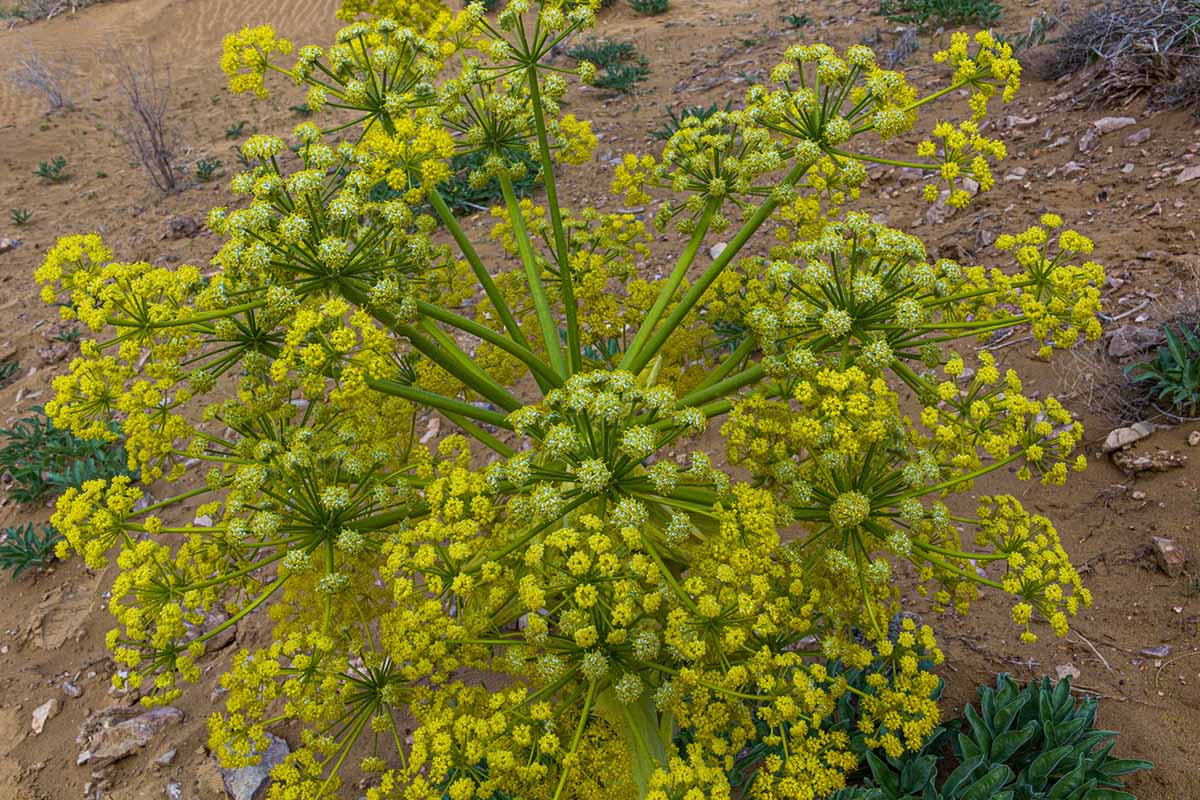
Okay, let’s talk turkey… and chicken, and fish, and lentils, and rice. Let me in on all the marvelous ways you’re going to use up your tasty plant. Share your ideas and recipes in the comments.
I hope this guide set you on the path to growing your own asafetida. I know you’re going to succeed.
While you wait for that slow grower to mature, you might be interested in a few of our other guides to growing kitchen spices:
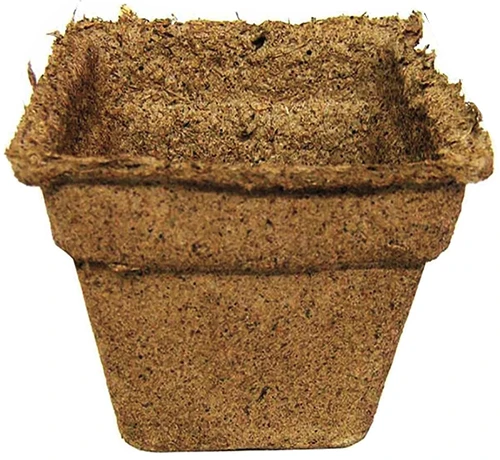
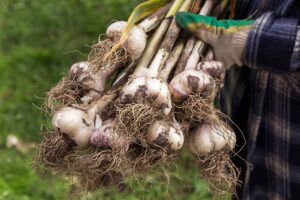
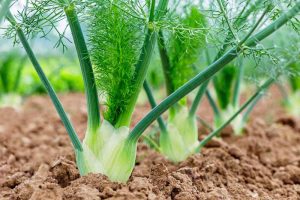
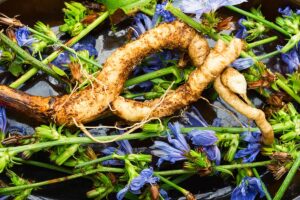
Hello,
Can you share some more details? I’m curious about what the soil mix was that you grew these plants in (I don’t see a specific soil recipe in this post). I want to breed plants in this genus and am concerned about drainage (my area gets a lot of rain) and cold. So I’m thinking of making a special soil mix and growing them in fabric pots (for extra drainage and so I can bring them in when it is too cold). You mentioned several species in this genus, do you know where to get seeds for those?
Hi Dan, if you’re planning on growing in containers, any well-draining potting soil will do. I personally swear by FoxFarm Ocean Forest potting mix. If I could buy this stuff by the truckload, I would. Amazon carries it in 1.5 cubic foot bags if you’re interested. Otherwise, go with your favorite standard potting mix or combine a cactus and standard potting mix. To improve drainage, add some rice hulls or perlite. The trick is going to be having a large enough pot to accommodate the root and making sure the soil stays loose and well-draining. If the soil compacts, the… Read more »
Where do I find the plant seeds???
Hi Jim, where are you located? A Google search will give you a few options for the US, UK, or Australia for seeds. I see some on Etsy, eBay, All Rare Herbs, and Jekka’s, though I can’t vouch for any of these vendors.